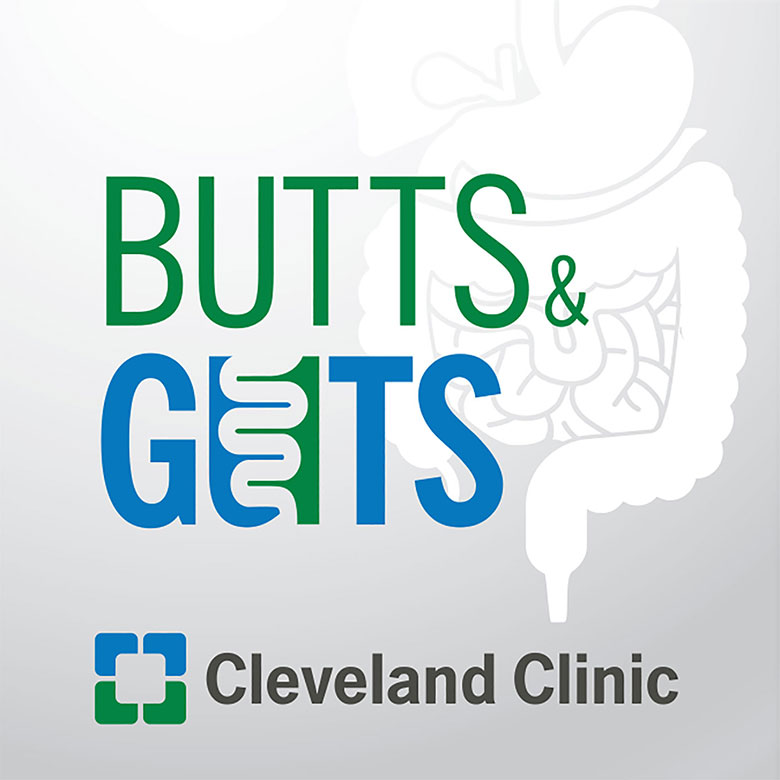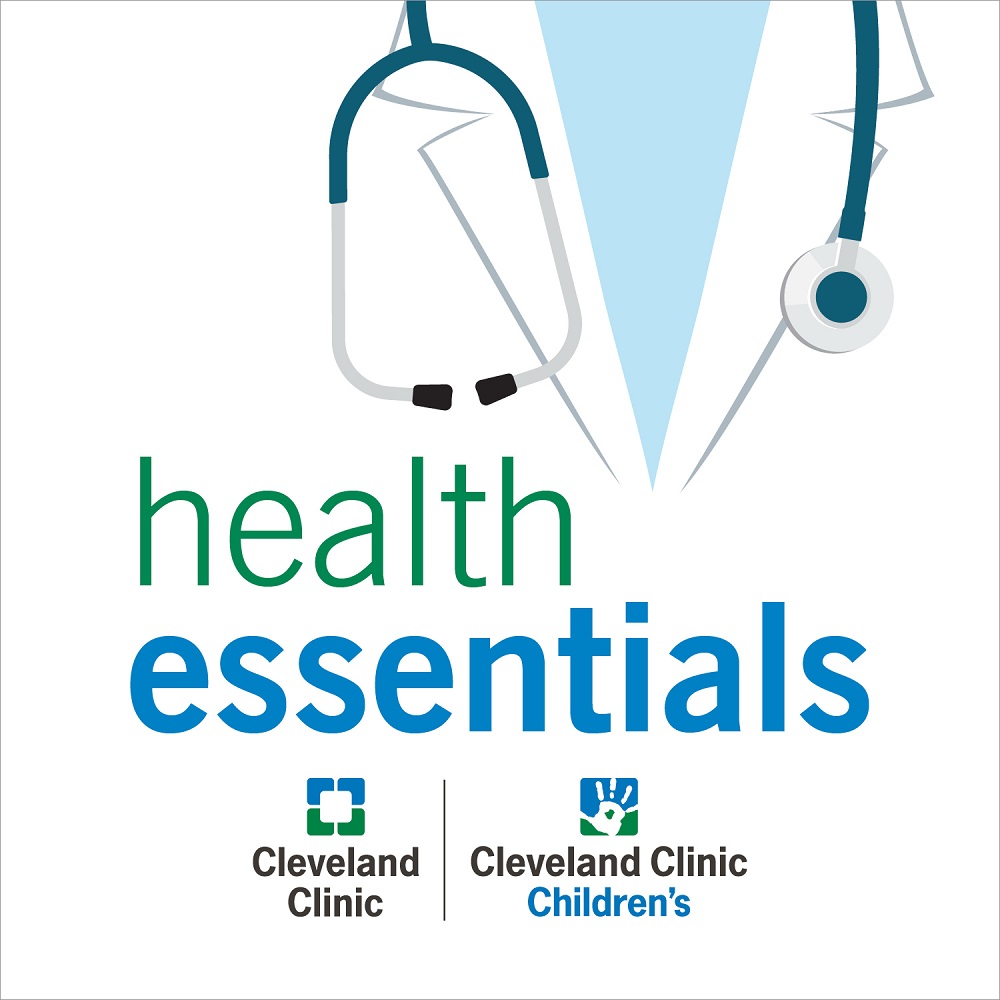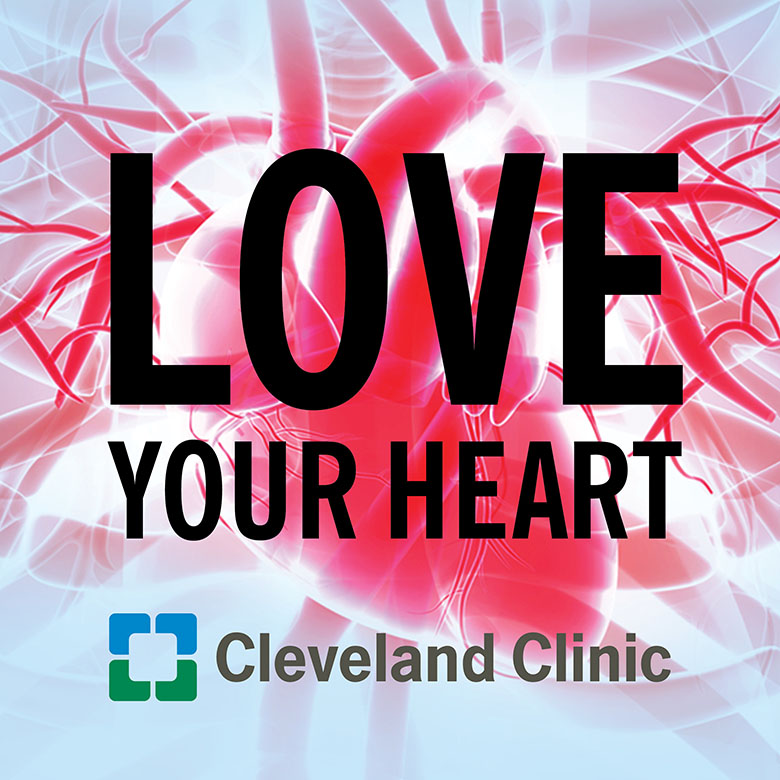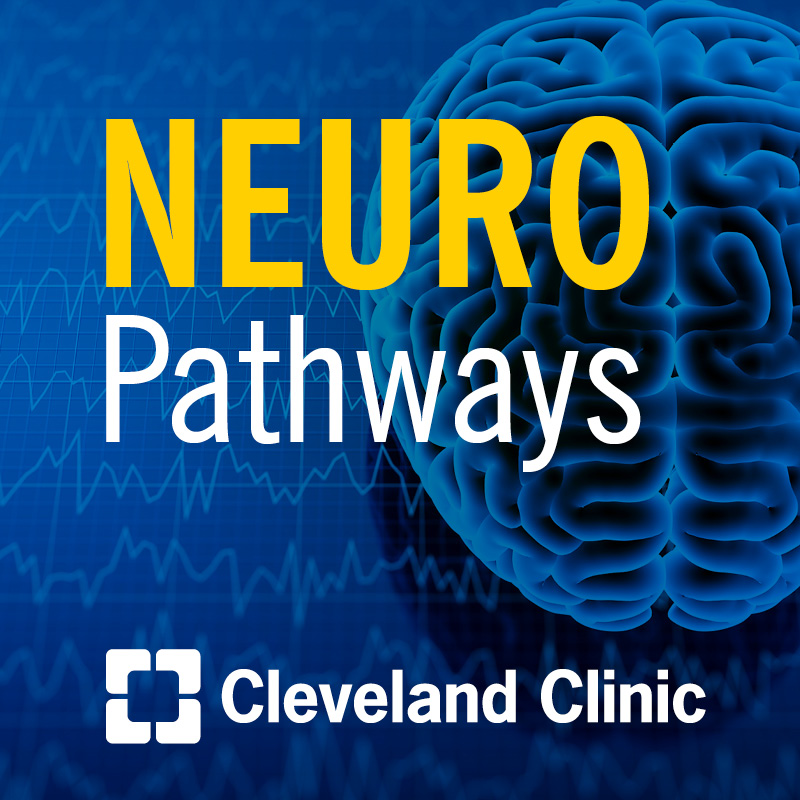Understanding Cardiac Rehab

Cardiac rehabilitation is a program that combines exercise, diet and education to help people with heart conditions. Erik Van Iterson, PhD, MS, MA, explains the many benefits of cardiac rehab, including an improvement in quality of life for patients.
Learn more about Preventive Cardiology & Rehabilitation.
Looking to refer a patient? Please reach out to our Physician Referral team Mon. - Fri., 8 a.m. - 5 p.m. (ET), toll-free 800.223.2273, ext. 49162.
Subscribe: Apple Podcasts | Podcast Addict | Buzzsprout | Spotify
Understanding Cardiac Rehab
Podcast Transcript
Announcer:
Welcome to Cleveland Clinic Cardiac Consult, brought to you by the Sydell and Arnold Miller Family Heart, Vascular and Thoracic Institute at Cleveland Clinic.
Erik Van Iterson, PhD, MS, MA:
Good morning, everyone. Thank you very much for tuning in for this podcast, focusing on this topic of cardiac rehab, why it is critical and how we can improve access and compliance. My name is Dr. Van Iterson. I am the director of cardiac rehab at the Cleveland Clinic.
Today, we'll be covering a few topics fundamental to cardiac rehab. I'll begin with giving a general overview of the modern cardiac rehab program and its key components. I'll also briefly refresh you on who are the patients who are eligible for the service. I'll then provide key evidence to confirm the critical importance of cardiac rehab initiation, participation, adherence and completion. I'll conclude with a brief discussion on accessibility and compliance concerns that have unfortunately plagued cardiac rehab for the past several decades. I'll highlight specific historical factors that have been proposed as serving as key barriers to the utilization of cardiac rehab in its intended manner, but also discuss emerging things that have been proposed that potentially could be used to overcome many of these barriers. I'll conclude with discussing some high-level actionable processes that I believe to be very impactful in the immediate term, but also long-lasting for the long term and utilization of cardiac rehab.
So, I'll begin with perhaps what we might all think about when the term cardiac rehab first arises. Many of us may not realize that yes, exercise training is involved in cardiac rehab, but this only represents the origin story of cardiac rehab back when it first started in 1970. In the modern-day version of cardiac rehab, yes, exercise training still exists as a fundamental component of the service, but that exercise training can only be optimized when we look at cardiac rehab from a multidisciplinary perspective. Cardiac rehab always includes discussions and education with patients about exercise training, but also importance of blood pressure management, lipid control, blood sugar control for diabetes prevention, tobacco cessation, if there's a concern there, and psychosocial and mental health awareness and education and strategies to manage that, and finally, important education on topics relating to diet, nutrition and body weight management.
Cardiac rehab is indeed a multidisciplinary systematic approach to applying secondary prevention therapies of known benefit. The known benefits benefit these very specific defined patients who are eligible for cardiac rehab. The benefits of cardiac are so potent that all the professional societies to date have designated cardiac rehab as a Class 1 recommendation for each of these defined indications for cardiac rehab participation. For all of those conditions, cardiac rehab is always individualized to the patient regardless of what they're coming in for. This will always include the initial intake type of visit where we strongly encourage individuals who are eligible for cardiac rehab to get started as soon as possible.
For some of these patients, it can be in as little as one week, but typically most can start within 21 days following their hospital discharge. We don't want to delay cardiac rehab initiation because we also know that every day that goes by beyond an ideal window of starting this program, there unfortunately becomes a lesser likelihood that a patient will begin the process. So getting started early is better and it is optimal for extracting the best benefits from not just the three sessions per week or 12 consecutive weeks or 36 sessions of cardiac rehab, but the lifelong practice of cardiac rehab after you get done with hospital-based care.
When patients come into cardiac rehab, we take all that information and create what we call an individualized treatment plan. That means patients have a clear set of interventions defined to address each of the risk factors relating to those seven core components of cardiac rehab. We set very specific goals for patients to work towards throughout the program, but to also set them up for success beyond cardiac rehab. We want patients to not just, of course, participate, but we want them to be adherent to the education, the recommendations and ask questions.
When patients initiate cardiac rehab, they participate in the sessions, they adhere to all the program recommendations, and then they complete cardiac rehab with a discharge consultation to discuss what they should do beyond cardiac rehab. We know that this approach of full compliance does elicit very potent results as indicated by the key evidence and outcomes available in the body of literature to date. Some of the most powerful evidence does come from our largest patient population. That would be those coming in the cardiac rehab with acute coronary syndrome who have experienced myocardial infarction with or without revascularization need.
The data that's been aggregated in the largest systematic review of over 85 randomized clinical trials in over 23,000 patients looking at the benefits of cardiac rehab in these patients, the data are very potent in showing the benefits of cardiac rehab are with patients at the short-term follow-up, medium-term follow-up, and long-term follow-up when viewing very important key clinical outcomes, such as risk of myocardial infarction recurrence, all-cause hospitalizations, cardiovascular-related deaths. Those important outcomes and the reduction in risk associated with a cardiac rehab course persist in the long term as long as individuals continue to adhere to and participate in those principles of secondary prevention.
When we then look at another patient group who are even at more risk than the patients coming in with coronary artery disease, we see similar types of benefits extracted from cardiac rehab. When patients with heart failure can go on cardiac rehab, participate in cardiac rehab, adhere to cardiac rehab and complete it, when we compare their clinical outcomes to those who did not participate in cardiac rehab, we can see some strong benefits gained through reductions in risk of hospitalization readmission, as well as improvements in quality of life. Importantly, these are outcomes that patients experience not just in the short term or less than a year after finishing cardiac rehab, but these are benefits that patients tend to experience more than a year after the cardiac rehab experience began.
Even though changes in fitness or cardiovascular fitness aren't a prerequisite to extracting the benefits of cardiac rehab, we do know that in general there is a very strong association between fitness and risk of cardiovascular disease and other cardiovascular outcomes where this has been demonstrated across the health spectrum. It's because exercise training is a fundamental component of cardiac rehab. We do want to quantify approximately how much does exercise training and cardio historic fitness contribute to those cardiac rehab type benefits and their relationship with key clinical outcomes.
Looking at patients who had participated in cardiac rehab because they experienced a heart attack with or without the vascularization need, we see at the cardiac rehab entry point that when patients are stratified by different fitness levels of low, moderate and high, that even just starting cardiac rehab, the fitness level is a strong prognostic indicator all-cause mortality. When compared with those least fit, the individuals who are moderate to high fit demonstrate a fairly robust 46 to 68% reduction in all-cause mortality in the long term. But importantly, because cardiovascular risk is modifiable over time, as well as fitness, we can see that as a consequence of participating in cardiac rehab over the course of 36 sessions or 12 weeks, what the data shows is that regardless of what starting fitness level you have, everyone can benefit from cardiac rehab and everyone can improve their fitness over the course of that program.
The data showed that those coming in with the least fitness ended up demonstrating the largest improvements in their fitness by the time they finish rehab. But overall, that change in fitness across the entire patient cohort translated to, on a permit basis, 13% reduction in all-cause mortality risk in the long term just from a single unit increase in fitness. When broken down further into examining those who were least fit, the data actually supported those individuals saw even a greater reduction of 30% risk of all-cause mortality in the long term and compared with the overall cohort. The evidence further demonstrated that when cardiac rehab is something that is continued to be practiced and patients are followed up one year following their completion of the program, fitness continues to be modifiable, and so too does risk levels of any caused death. Those patients who did follow up one year following completion of their program continue to demonstrate appropriate improvements in their fitness levels. That translated into per-MET basis 22% reduction in all-cause long-term mortality risk. The evidence is very powerful in terms of the benefits gained through cardiac rehab and recognized in those clinical trials, looking at established key clinical endpoints.
When we think about those benefits gained through cardiac rehab, and we want to understand what's the best way to extract those benefits. We always want to start off with recommending patients achieve the optimal dose of cardiac rehab, that being 36 out of 36 sessions. We also want to know, if a patient can't complete all those sessions, is there any benefit to doing any less sessions and what would that look like? The data would support that something is definitively better than nothing. There's evidence to suggest that just doing one session within, say, 90 days of being discharged from the hospital is substantially better than doing no cardiac rehab. That translates to, in the long term, an over 42% reduction in all-cause mortality risk by just doing one session of cardiac rehab.
You may be wondering, is there a graded benefit of doing cardiac rehab somewhere in the middle, more than one but less than 36? The evidence would also support the benefit of doing, of course, more than one session of cardiac rehab. The data, when broken down into these quartiles, when compared to doing no cardiac rehab, we can see that doing more than the bottom quartile, one to 11, there is a very robust benefit to doing cardiac rehab with respect to the effect risk of major cardiovascular events. The top-most number of the reduction of 47% doesn't necessarily mean that you should do less in order to be at the largest reduction of cardiovascular risk because there's a lot of nuance behind some of this data.
When we think about all of these powerful benefits of cardiac rehab and we look at not just immediate-term gains, but the long-term gains in cardiac rehab, we might be thinking that why is there a discussion about cardiac rehab utilization and uptake and adherence and that maybe patients should be flocking to the service and there should be no concern about this? But unfortunately, the data would suggest otherwise. These contemporary data illustrate that despite the powerful benefits of cardiac rehab, there are still strong data points indicating that it is grossly underutilized in its intended manner. Also unfortunately, these are historical trends that continue to persist over decades where roughly the participation in cardiac rehab has been pretty stagnant, somewhere between 25 to 35% on a year-to-year basis out of all those who could potentially be enrolled. Similarly unfortunate is that those who do enroll in cardiac rehab, the completion of the program is also suboptimal generally within that realm of 25 to 35%.
We might be wondering what could be the problem in terms of we know the benefits of cardiac rehab. We know patients benefit in the short, medium, and long term, so what could be preventing patients from the time they leave the hospital to taking a straight path to cardiac rehab and participating in something that is driven to benefit their health? Unfortunately, there's many barriers that arise that have prevented patients from utilizing cardiac rehab for their care, some being in their control, some not being in their control. Many times it's many of these factors together that are contributing to their non-participation in cardiac rehab.
When we look at what potential facilitators could be targeted and interventions put in place to overcome some of these barriers so that we could rebalance the scales to overcome these barriers, in the past 10 years, and particularly with the COVID-19 pandemic, certain gains have arisen in terms of implementing processes that would overcome not just one of those barriers, but multiple of them at the same time. Some of these things have been very closely tied to technology and the use of remote-based care and other things such as allowing patients to have more freedom in when they do cardiac rehab versus maybe the traditional business hours of an outpatient center.
When we look at some of these types of interventions, we can definitely say that they would address some of the barriers known to prevent patient participation in cardiac rehab, but of course, like anything, they don't address all the barriers. What we really want to focus on is the upstream barriers that are preventing patients from even having a chance to enroll in cardiac rehab, not necessarily ignoring the downstream factors of having already received a referral to cardiac rehab, because that's important.
But importantly, we want to make sure that every patient who deserves cardiac rehab has that opportunity. They receive the right order, and they have an important discussion about its importance. When we focus upstream on cardiac rehab and its proper utilization and we look again at trying to rebalance the scales of those barriers that are preventing cardiac rehab versus the facilitators that are aimed to overcome those barriers, I think it's really important to emphasize that upstream effect of discussing cardiac rehab with patients and making sure that they have the right orders in place, making sure that we're sensitive to all their sociodemographic needs. At the institutional level, make sure we're looking at that data to ensure that we're not missing patients who should be participating in cardiac rehab, but were never given the opportunity.
The data would support the importance of addressing this upstream effect of patient referral to cardiac rehab. Historical data would illustrate that patients who should be doing cardiac rehab are not necessarily receiving the order to do it at a national level. We can see for patients who have undergone a PCI or cardiovascular interventions in volume, the greatest number per year based on the latest AHA heart disease and stroke statistics, that just barely over 50% are actually getting referred to cardiac rehab. If we look at the heart failure population at the time of hospital discharge, unfortunately, the numbers plummet to somewhere around nine to 12%.
So there's obvious room for improvement in terms of just raw capturing patients who do have indication for cardiac rehab but aren't given the opportunity to even begin the program. Some interventions have looked at just placing an auto opt-out referral process using the electronic medical record system and having physicians be more present in terms of having discussions with patients about the importance of cardiac rehab and having other team members along the way also express the importance of cardiac rehab and have someone available to schedule patients for cardiac rehab.
The constellation of all those things coming together, the data with support there's a true clear benefit of that upstream targeting of factors that would be preventing cardiac rehab participation. This study back in 2021 illustrated that just over a two-year period of time of targeting these upstream factors that the actual referral process to cardiac rehab improved over the old standardized way of not doing an auto-referral by over 47-percentage points. By the time the study stopped in January 2019, the difference between referral to cardiac rehab versus the non-auto-referral to cardiac rehab was over 80% in the auto-referral group versus roughly around 31% for the non-auto-referral group, which was in line with national standardized norms.
This helps illustrate, again, the importance of giving patients the chance and an opportunity who are deserving of this important care for their heart by looking at what we can do better at the institutional provider level to make sure that we're setting up patients for success. That is, of course, still important to acknowledge even by implementing those types of interventions. We're not going to eliminate all those barriers because there's still going to be downstream barriers, but what we want to look at right now is what can we do right now with minimal extra resources, minimal extra time, and something that can have an impact in the immediate future that has long-lasting effects in the long term as well.
When we think about cardiac rehab, its importance and how we can improve the access and appliance is that we want to make sure that we clearly communicate to patients that cardiac rehab is a multidisciplinary systematic approach to applying secondary prevention therapies of proven known benefit and that they benefit through multiple avenues. That's not just the subjective, but they benefit clinically, their psychosomatic, their mental health. Economically, it's also a benefit in terms of quality adjusted life years gained through participating in cardiac rehab. On our end, at the provider or the institution or the center level, we need to further embrace the importance of what we say to patients and how we emphasize it and make sure that we're giving every patient the proper opportunity to do care that we know is proven to be effective in the long term.
Thank you very much. I appreciate your interest in this topic.
Announcer:
Thank you for listening. We hope you enjoyed the podcast. We welcome your comments and feedback. Please contact us at heart@ccf.org. Like what you heard? Subscribe wherever you get your podcasts or listen at clevelandclinic.org/cardiacconsultpodcast.
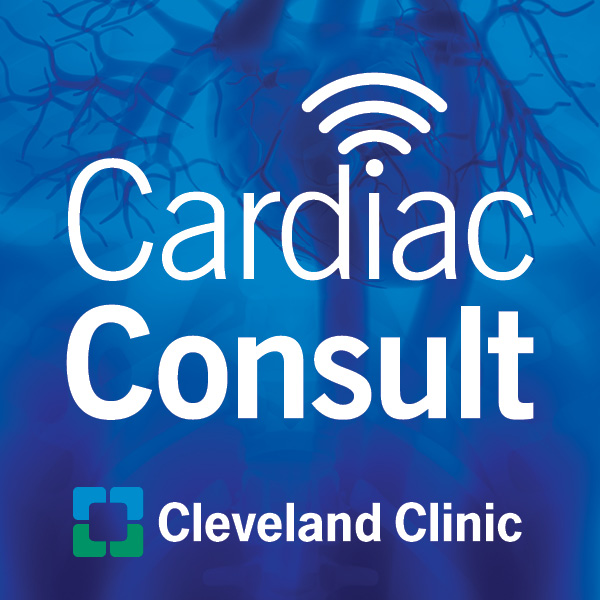
Cardiac Consult
A Cleveland Clinic podcast exploring heart, vascular and thoracic topics of interest to healthcare providers: medical and surgical treatments, diagnostic testing, medical conditions, and research, technology and practice issues.
